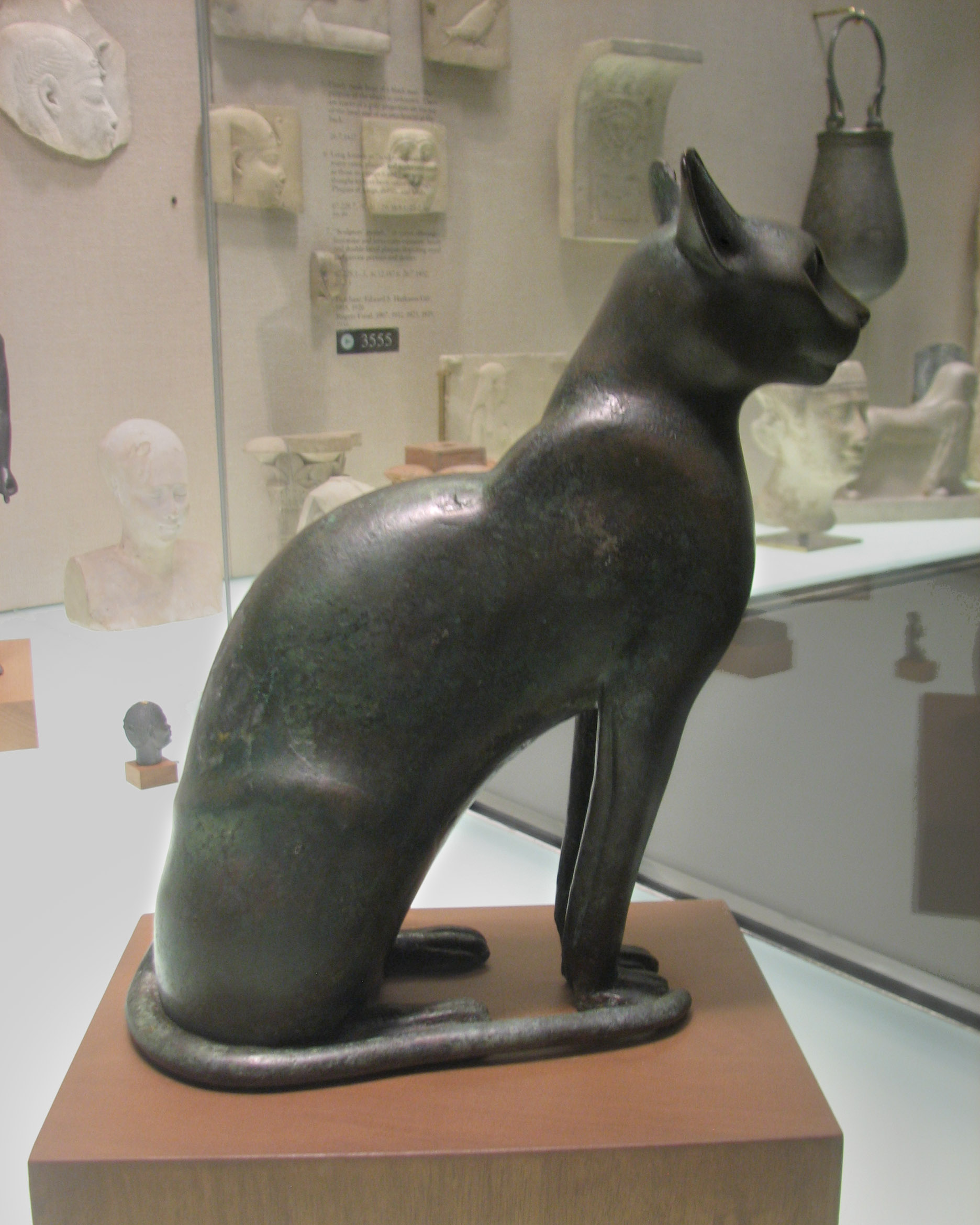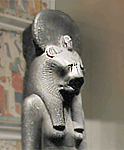
Bronze Cat
From the Macedonian (332-305 BCE) to Ptolemaic (305 BCE to 30 BC) Periods
Egyptian; Saqqara; Memphite Region; H. 28 cm (11 in)
Harris Brisbane Dick Fund, 1956 (56.16.1)
|
|
|
Museum website description "When fastened together along an almost invisible seam, the two cast halves of this figure became the container for a mummified cat. The cat was the sacred animal of the goddess Bastet. In rituals performed in her honor, mummified cats were buried within her temple precincts. Clearly this is not an ordinary cat. Its pierced right ear once held a gold ring (now lost), and suspended from its incised necklace is a wedjat-eye pendant. An impression of majesty is created by the cat's erect and dignified pose and the alert expression of the eyes. The sleek muscles and long graceful legs convey a sense of controlled power. "For the Egyptians, the goddesses Bastet and Sakhmet were two aspects of divine power. Sakhmet, the lioness, represented dangerous, potentially destructive forces."
 (My note: While fierce, Sekhmet was also seen as a protective deity.)
"Cats were first domesticated by the Egyptians in the Middle Kingdom for their mouse-hunting abilities. By New Kingdom times they had also become household companions. In tomb scenes they frequently appear seated beneath the chairs of their owners or on sporting boats in the Nile marshes, where they flush out birds for their masters." There are many fascinating things in the background of my capture of this elegant bronze cat, of which I wish I'd taken photos. But at least I got this piece:
 Situla   
|